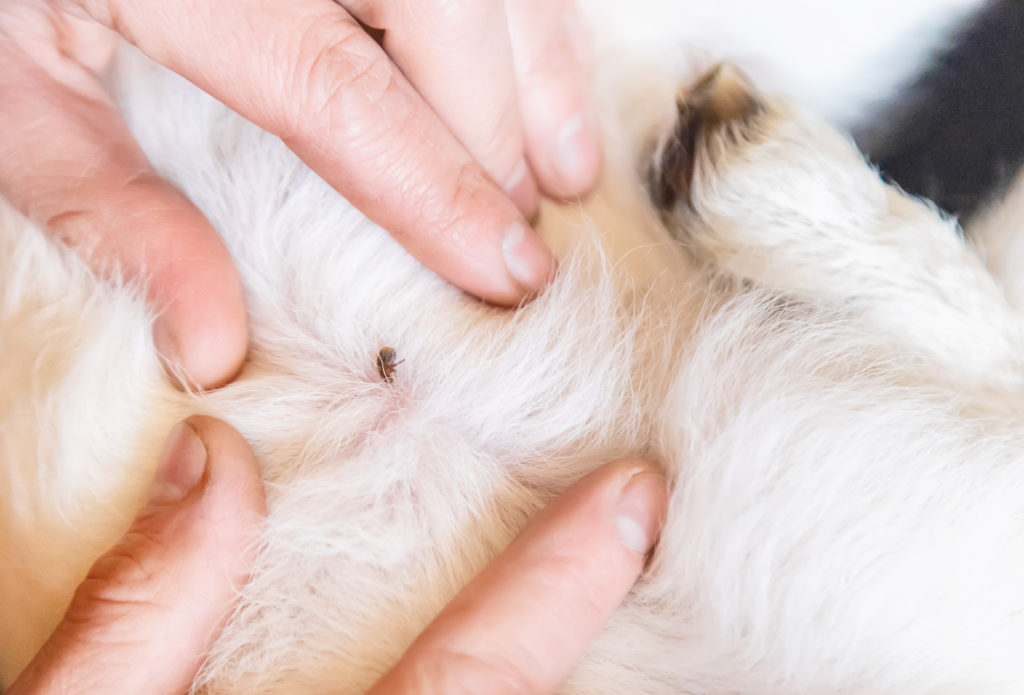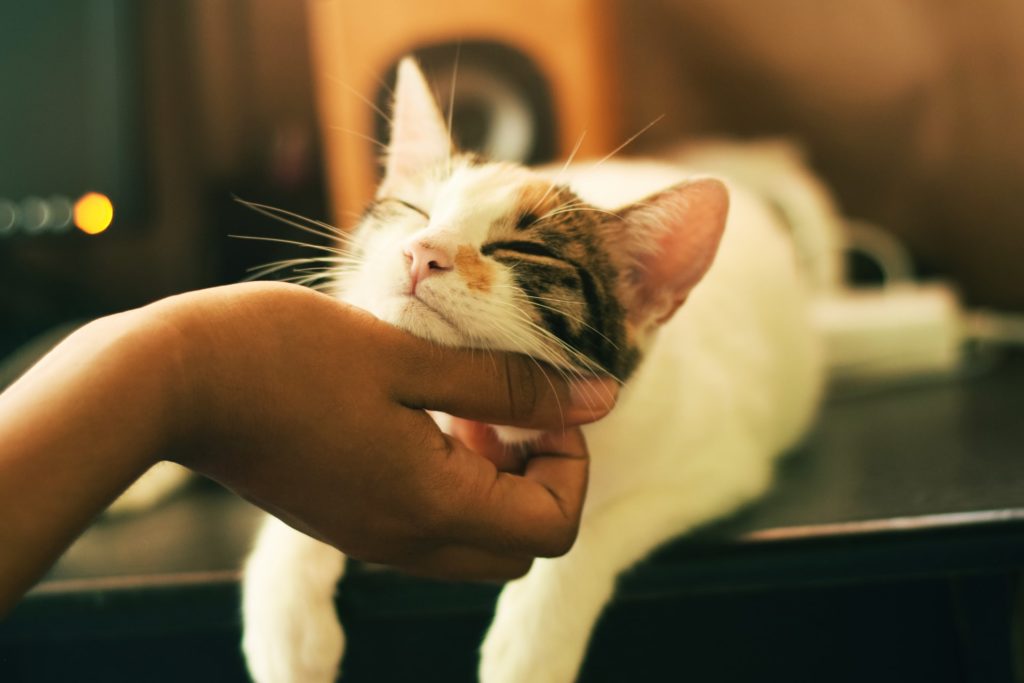Can cats get lice? It may be a problem you’ve never come across or even heard of before.
Fleas love dogs and cats and homes, ticks love dogs and deer and people — but lice? Aren’t they confined to human heads? Yes and no.
Here’s what you need to know about lice on cats—first, some background.
Can Animals Get Lice?

Animals can absolutely get lice. But it isn’t the same as the lice we humans get. There are actually three species of human lice. The one you may be most familiar with is the head louse, but there’s also body lice and pubic lice. See where this is going?
Dogs, cats, birds, and even livestock can host parasitic lice about as easily as humans can. But just as humans host three different species, animal lice are varied and plentiful. Most importantly, the lice are creature-specific.
So, Can Cats Get Lice From Humans or Give You Their Lice?
They cannot. There’s no need for concern for your pet if your little one brings home head lice — except worries for yourself and other human family members! Likewise, you don’t need to keep your cat at a distance if they have lice.
What About The Other Pets? Is It Dog Lice and Cat Lice, or More Generally Pet Lice?
It’s dog lice and cat lice, separately. These little bugs can’t make a cross-species jump and live to tell the tale.
Aside from that, dogs can get three different types of lice, while cats only attract one species. Let’s take a closer look at it next.
The Facts on Feline Lice
The single lice specific to cats is Felicola substrates. These tiny parasites are chewing lice —
distinct from biting or sucking varieties. They aren’t after blood but rather flakes of skin and oil secretions.
- Lice don’t have wings; they can’t fly or jump like fleas. They just crawl along slowly.
- They’re wide, flat, and pale.
- Lice eggs are white and stick to strands of cat hair something fierce — a simple wash can’t remove them. Upon examination, they might resemble dandruff, but the accompanying movement is a dead giveaway. Those are the hatched lice shuffling around.
The life cycle of a louse is about four weeks. Adults lay eggs called nits, which hatch into nymphs. They’re basically adults without egg-laying capabilities. After a couple of rounds of molting, the nymphs mature, and they’re ready to start reproducing.
- This cycle is important to understand because when you fight lice, you’re fighting several generations of the parasite.
- It’s impossible to get them all at once; repeat treatments/lice checks are necessary over several weeks.
Lice aren’t an especially dangerous parasite in and of themselves. They can cause a scruffy, unkempt appearance or matted fur.
But as the infestation grows worse, your cat’s scratching or licking at it can lead to bald spots and raw skin. It also increases the chances of some skin diseases and infections, like worms.

Does My Cat Have Lice?
Cat lice are rarer than fleas. That’s because they’re almost always passed through direct contact (sometimes indirectly via shared bedding, brushes, etc.). And since lice are species-specific, that means your cat has to come into direct contact with a pre-existing case of cat lice.
- So that makes it pretty contagious within a household. If you have an indoor/outdoor cat, they can bring it back with them the same way a child coming home from school might.
- If you have multiple cats and one has lice, assume they all do.
- But lice are much more prevalent in stray and feral cats, or within shelters, due to less hygienic conditions and more fraternizing between various animal strangers.
How to Check for Cat Lice vs. Fleas
Checking for lice — and identifying lice vs. fleas — is simple.
- You’ll need a fine-toothed comb (optional) and your cat (mandatory).
- Part your cat’s hair on their head or neck. Kitty can’t groom head and neck, so if there are lice, it’s probably where they’ll be concentrated.
- If you have a comb, hold the teeth close against the skin and carefully observe the hair in between. If you’re using your bare hands, make sure that you part all the way to the skin to see the base of the hairs.
- Check for small whitish dots, then movement.
Fleas and lice are about the same size, and both cause different degrees of scratching, licking, biting, and general agitation and restlessness. But the similarities end there.
- As we mentioned, the lice will be pale and crawling pretty slowly. Their eggs are white and stationary, and you wouldn’t really be able to pick them out if you tried.
- Fleas are very clearly black, and although you can spot them crawling through hair from time to time, they’re quick to leap away and out of sight. They also leave behind dark flea dirt.
Lice on Cats: Treatments
In the end, a flea vs. lice debate isn’t as pressing as it sounds.
- Active ingredients in topical flea treatments will kill lice as well! These include fipronil and selamectin; Frontline is a popular topical with fipronil.
- If you’re already using something like this for protection against fleas, your cat also has lice protection built-in.
- You can also get an appropriate anti-lice shampoo or powder from the vet.
However, remember that cat lice do not consume blood. So, any treatments for chewing lice on cats, systemic and oral products won’t cut it.
- Additionally, you may need to repeat treatment more often than you would for fleas. Take this into account when deciding on a topical, as some may be too harsh for such frequent use.
- With a flea collar, coverage is relatively continuous — otherwise, a touch-up every week or every two weeks is recommended.
- Consult with your veterinarian for a specific treatment plan that works for your cat. Check your cat for the progression or regression of lice throughout the treatment.
And finally, make sure bedding, lounge areas, brushes, and all the like are properly washed or sanitized. Lice can’t live more than a couple of days off the host animal (your cat), but they will come crawling back amid treatment if given the opportunity.
Takeaway
Cat lice is an issue you should be aware of, but it isn’t all that common.
Did you adopt your cat straight off the street or from an overpacked, understaffed shelter? Lice are a concern, though an unlikely reality. Do you have one cat, indoor only, who’s itchy and showing some white specks? Don’t panic at all.
It’s not likely they’ve got a spontaneous case of lice! They may simply have dry skin and dandruff. If you’re ever worried but can’t quite tell, just bring kitty over for a quick checkup at the vet. They can let you know if your cat’s got lice or any other skin issues that need addressing.
